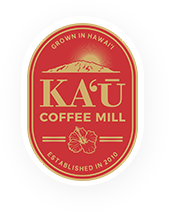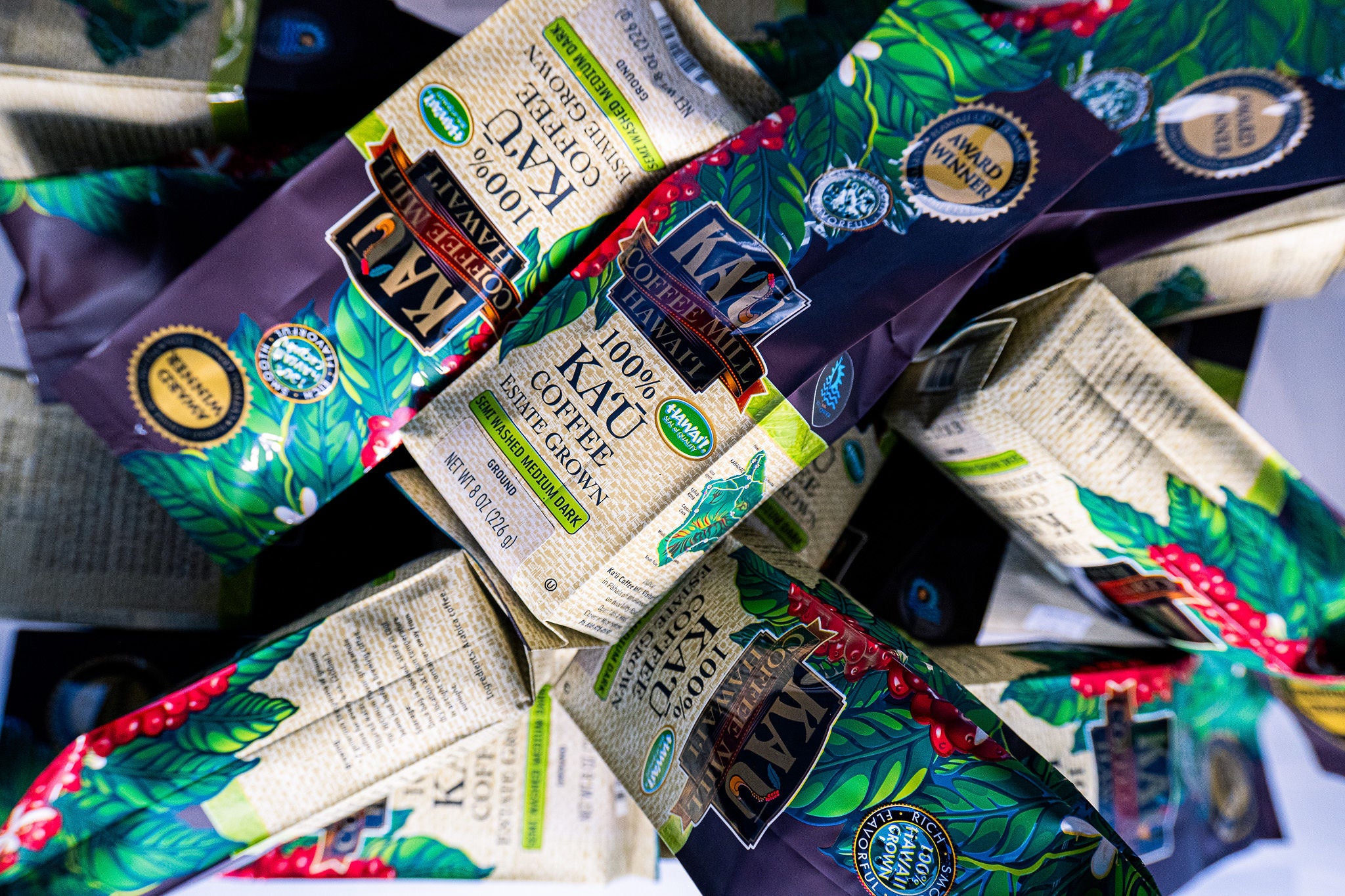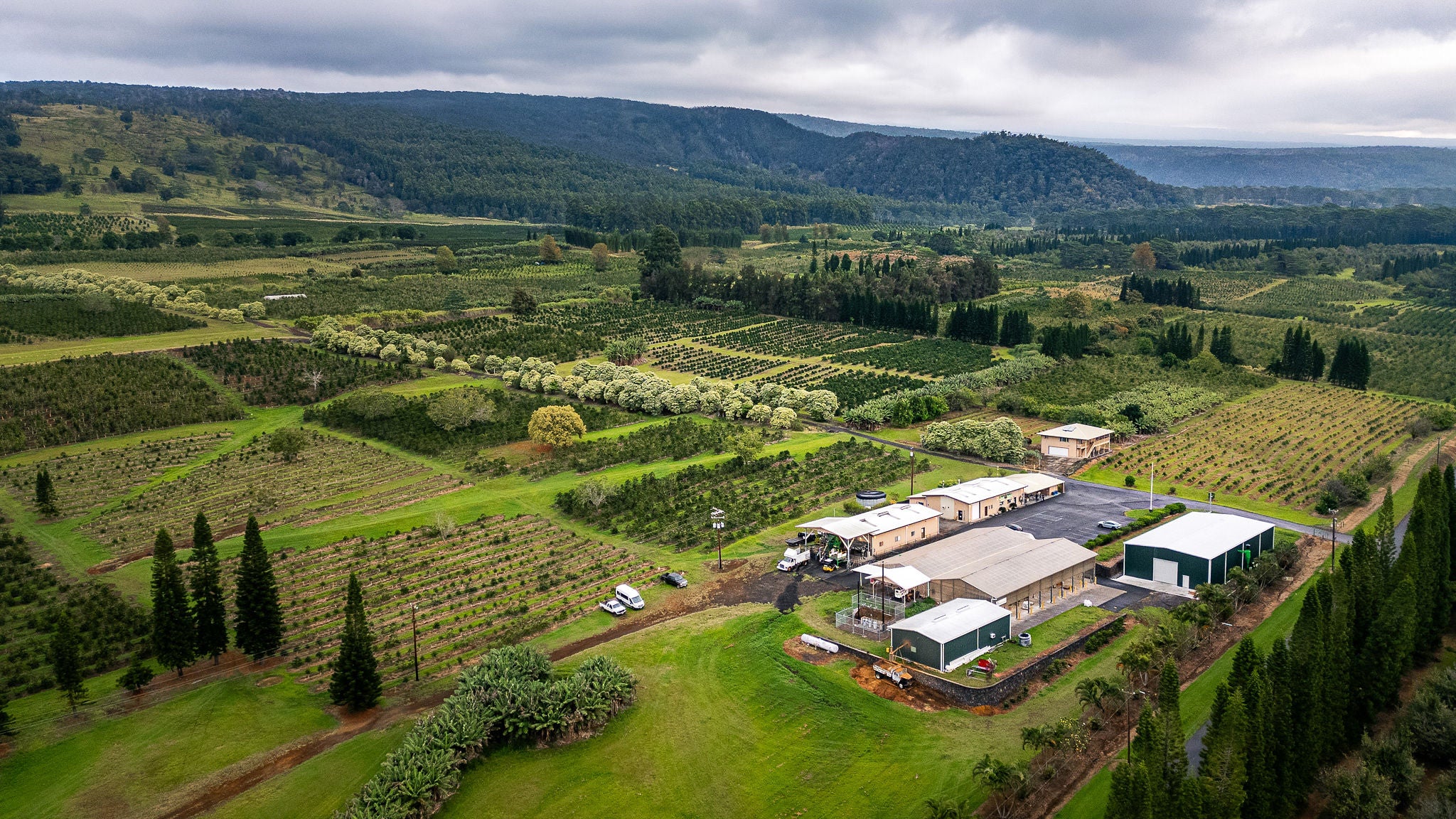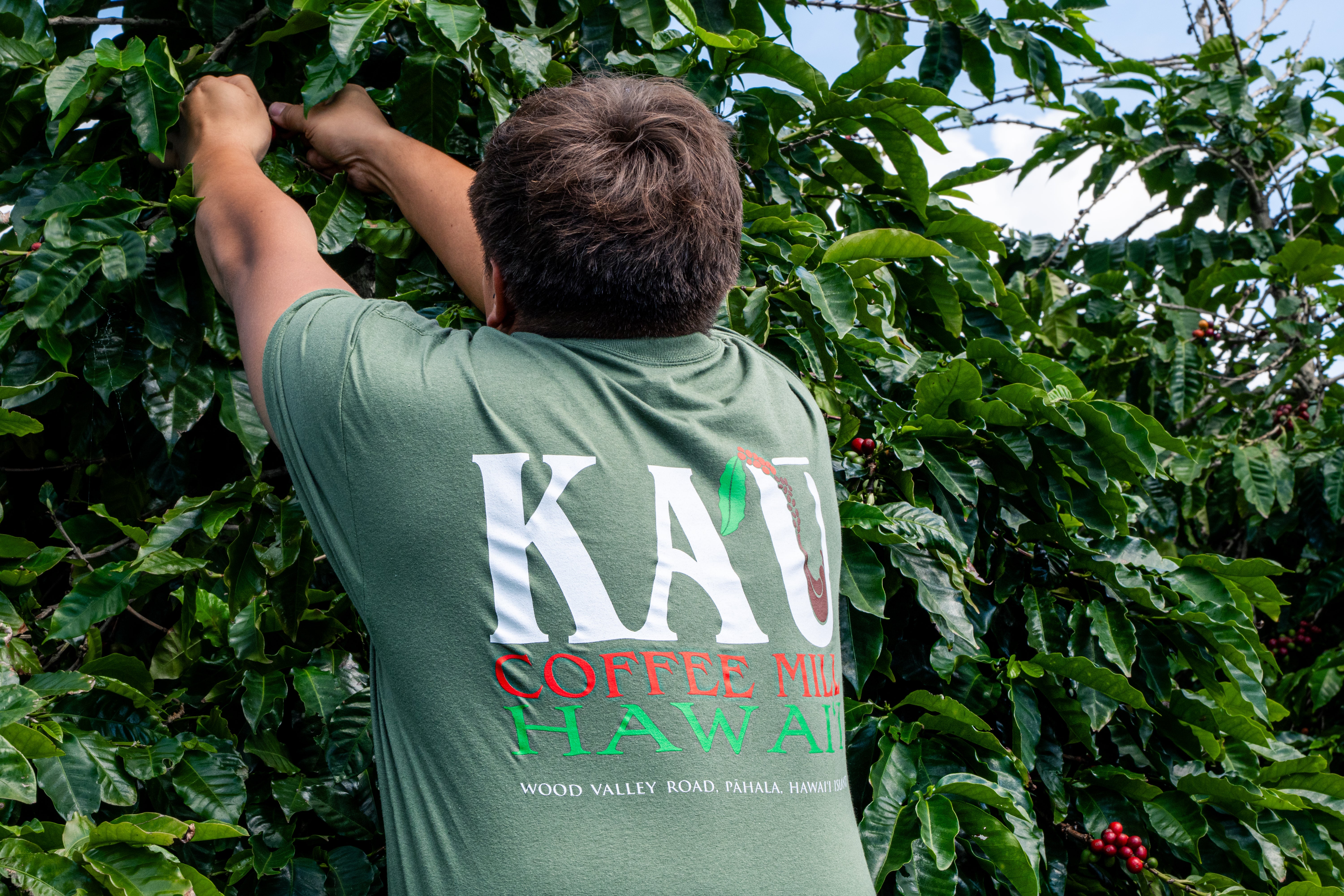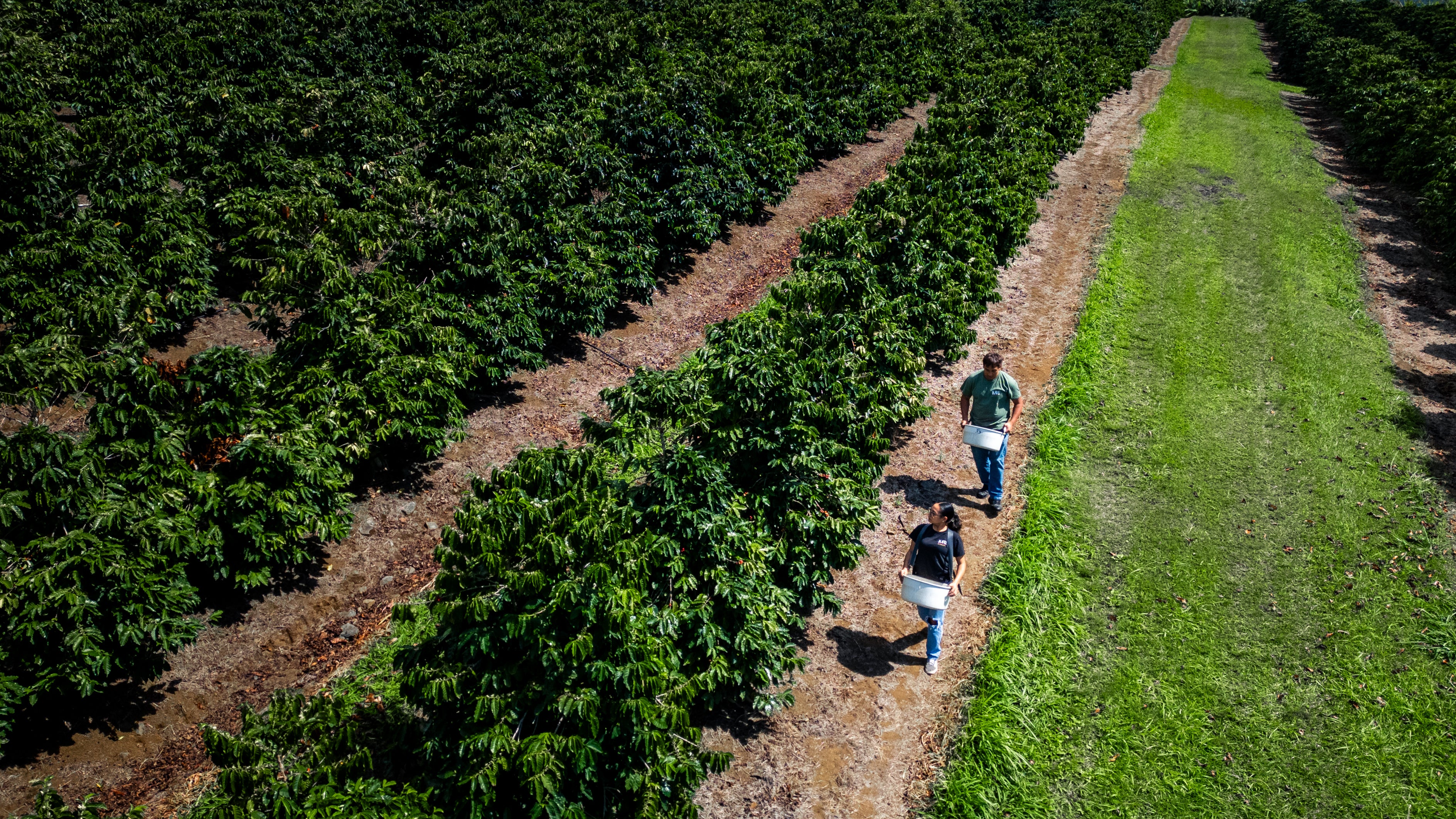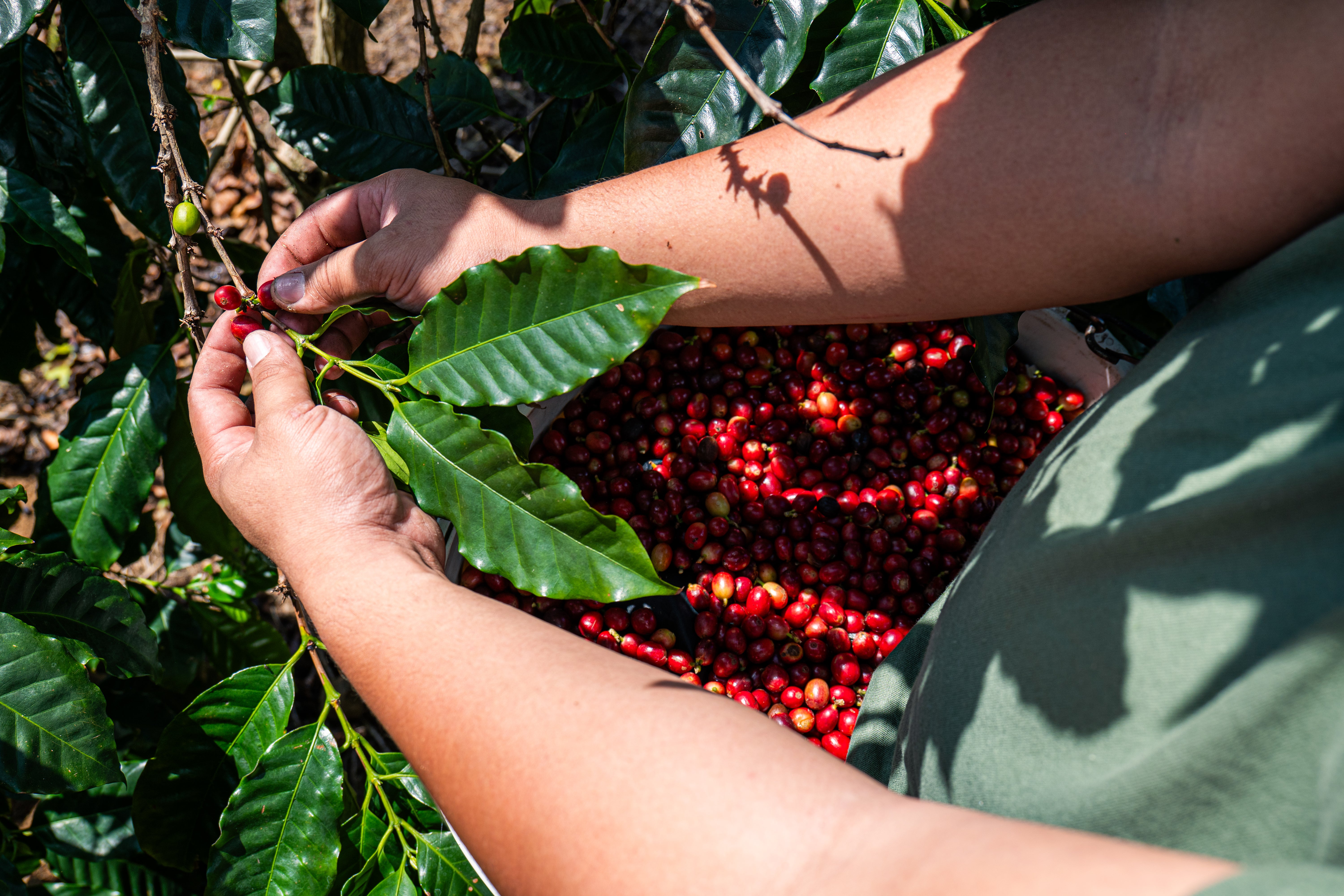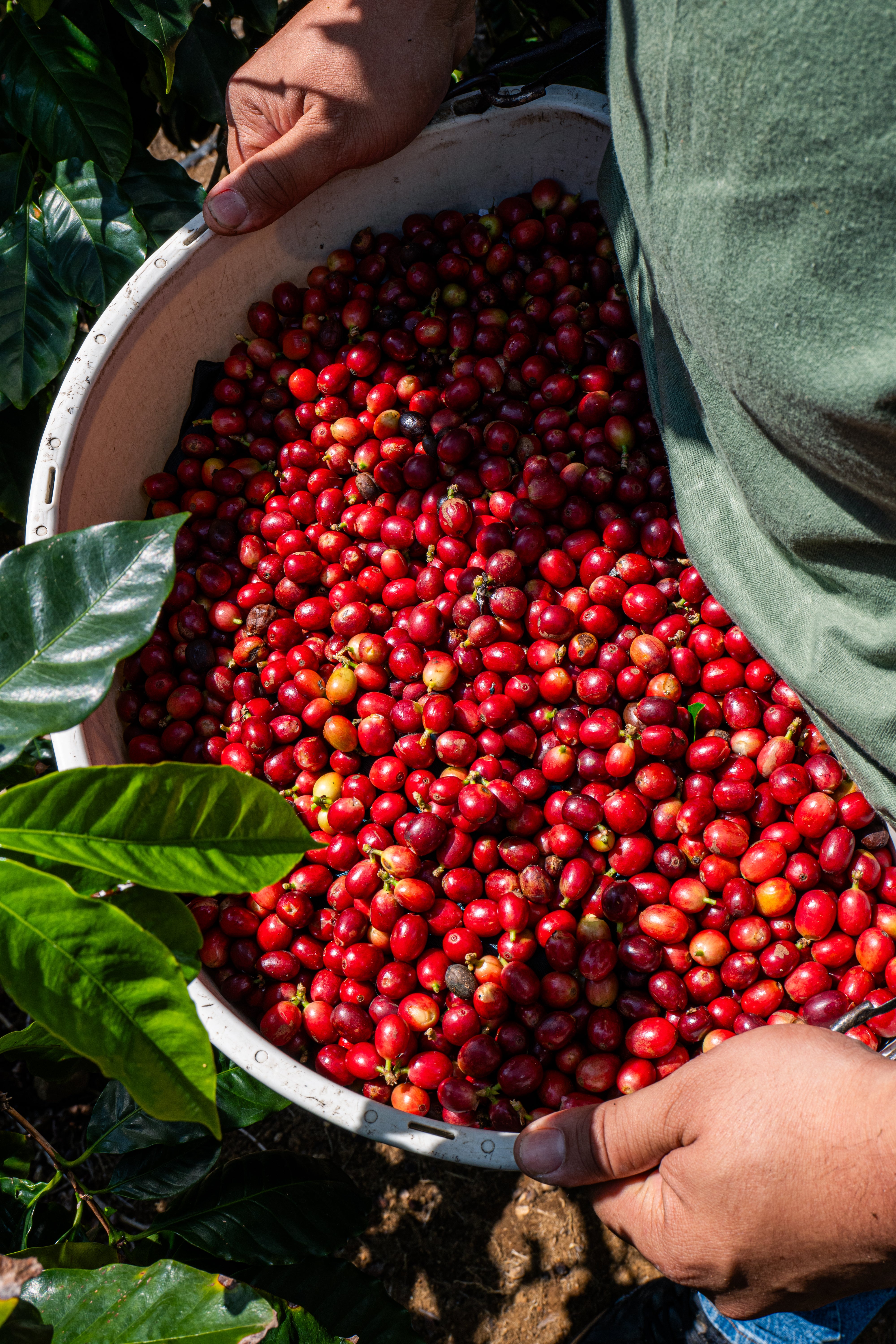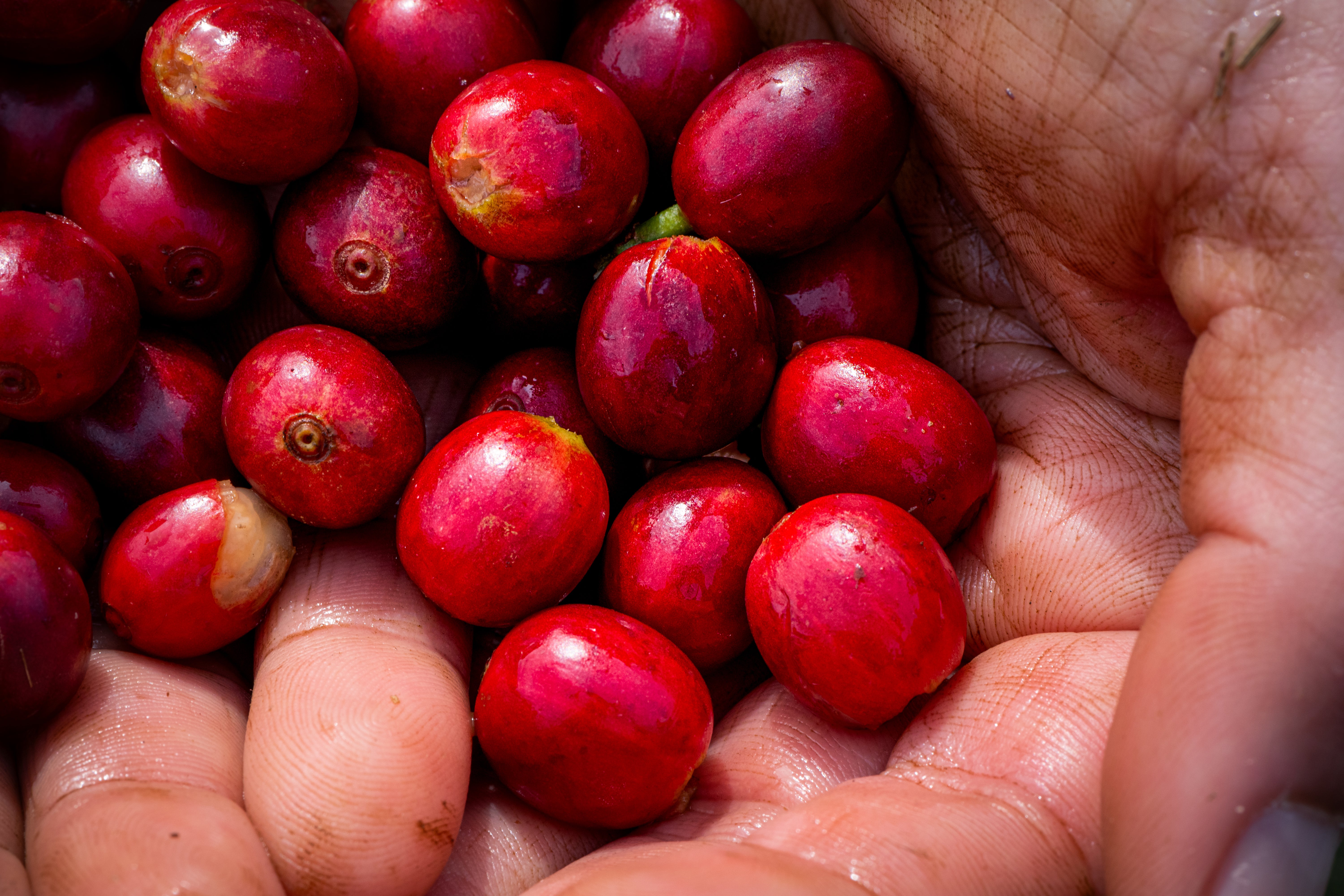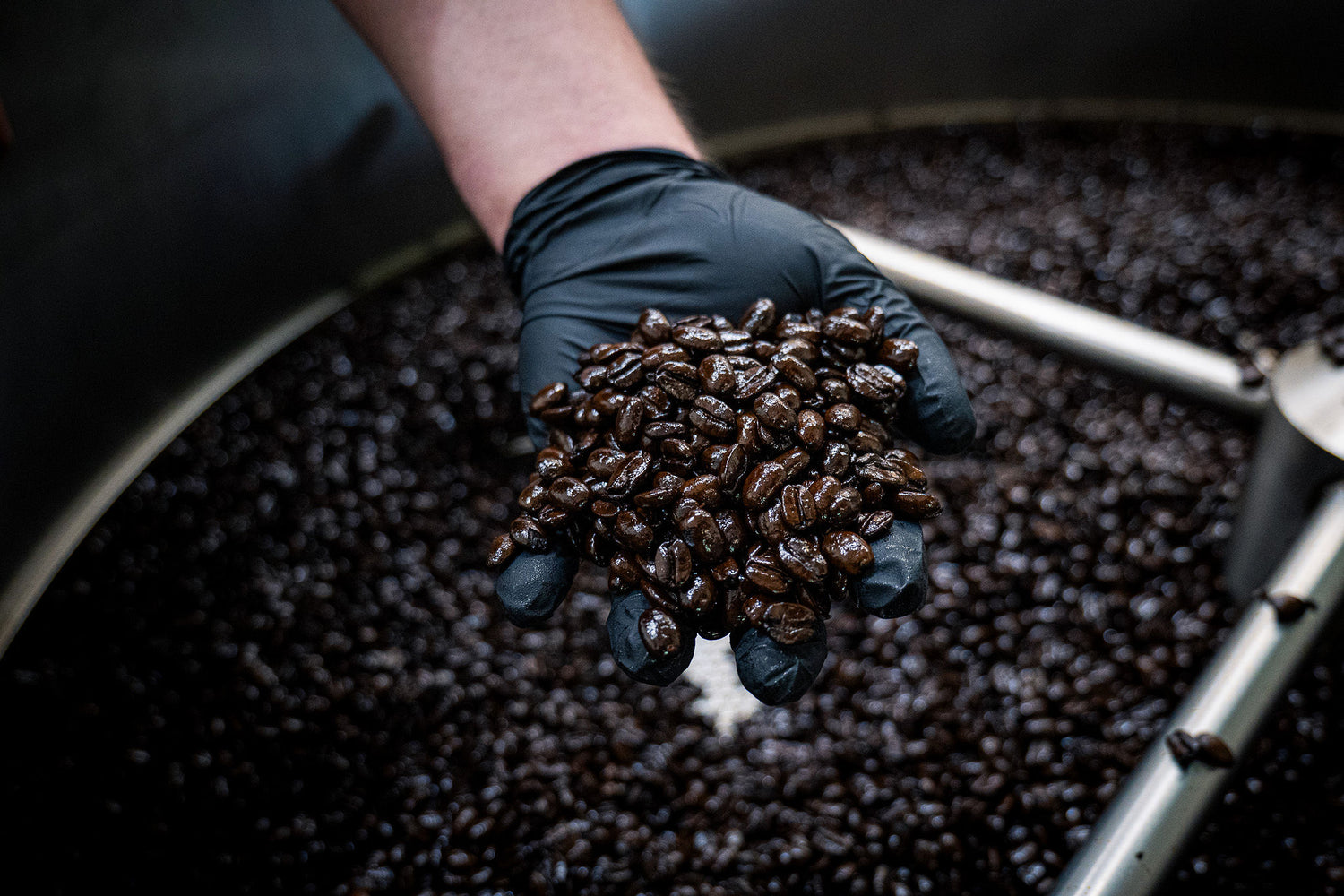02
HARVESTING
In order to ensure the highest levels of quality for our coffee, we harvest all of our coffee by hand using a team of skilled pickers. We utilize selective harvesting, picking only the ripest, reddest cherries. Immature cherries are left on the trees for future harvesting.
This type of harvesting requires multiple harvests over the same areas and is very labor intensive. Hand harvesting raises our quality to the highest levels, not only for our customers but also to meet the demands of the specialty coffee industry. For the coffee to be complex in the cup, it is essential that the cherries have reached maturity when they are picked. We do not use mechanical harvesting primarily for its detrimental effect on quality.
The resulting mixture of unripe and ripe cherries from mechanical harvesting has a huge impact on cup quality. Harvesting season begins in late Summer and continues through the Winter months and into early Spring. We truly believe that hand harvesting is a big part of the hands on process that make Ka'u coffee so unique and special around the world.

